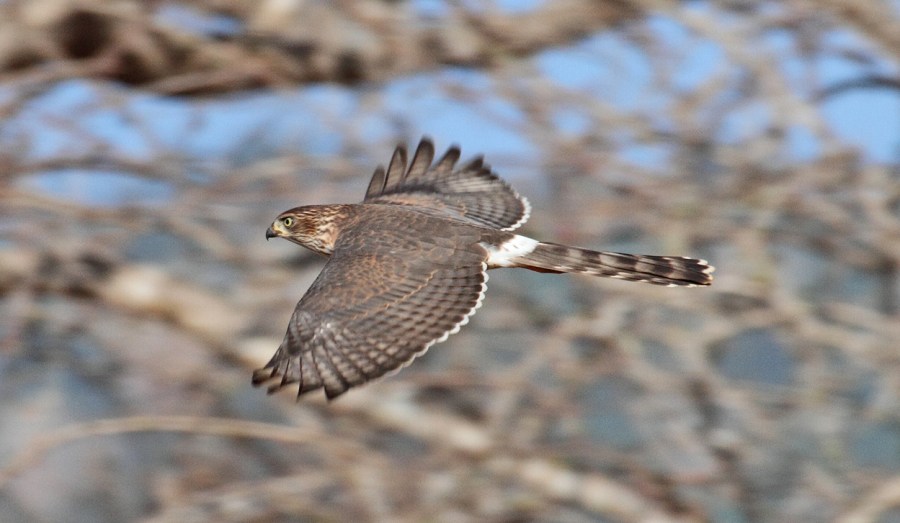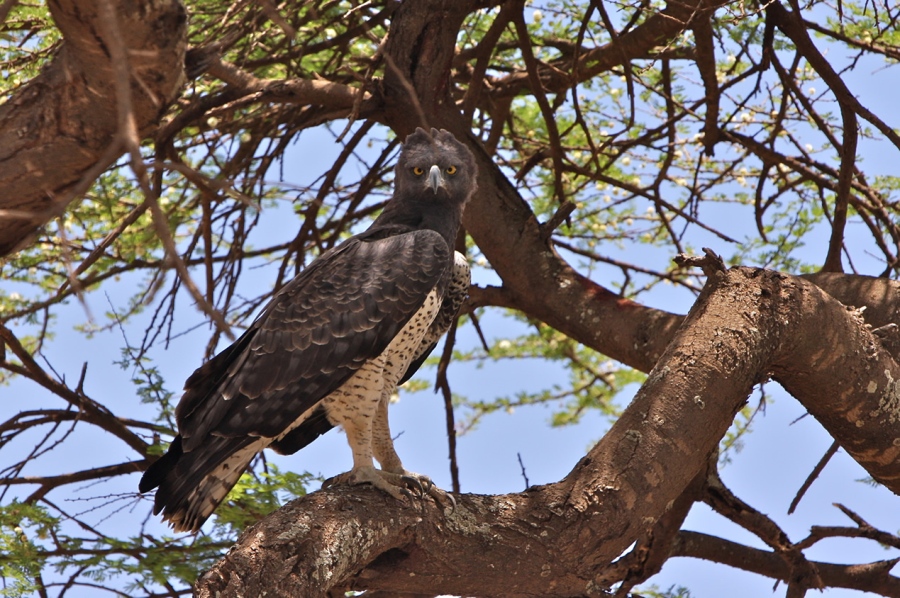On the 8th June the birds were out in force with 57 different species recorded on the morning Birdwalk, some of the more notable ones being Lanner Falcon, Dark-chanting Goshawk, Common Kestrel, White-faced Scops Owl, Red-fronted Tinkerbird, Red-fronted Barbet, Lesser Honeyguide, Nubian Woodpecker, Brown-tailed Rock Chat, Pygmy Batis, Northern Crombec, Purple Grenadier, Red-headed Weaver and Yellow-spotted Petronia.
Early in the month, the water level in the Lake increased tremendously to an extent where of most us have never experienced it before in our days there (29 Years) . Goliath, Purple and Squacco Heron with their rich blue billls acquired when breeding are all gathered along the numerous floating Island frequently seen in several part of the lake.The Bee-eaters species of Blue-cheeked, Madagascar, Little and Somali are flying up and down to some of their unlucky prey, a most magnificent sight.
On another evening a Bat-hawk flew past the Lake Baringo Club, to God knows where !It was probably an ideal hunting time considering that most the Yellow-winged Bat were starting to be active, a surprise indeed!!.Toward the far end of our air strip, a woolly-necked Stork flew overhead and later eight ostriches were seen.Other interesting birds seen from around the air strip include; Pygmy Falcon, Heuglin’s Courser and Spotted Thicknee. The Thicknee’s must have had a nest in the rocks because on hearing us approach they would dart away from the rocks then stand frozen, out in the open, their luminous legs glowing like neons.
Three young Rufouse Chatterers come one evening to feed with the weavers and starlings. These charming youngsters had no fear and bravely waited their chance to snatch at the proffered crumbs regardless of the jostling competition surrounding them. Thereafter they were often seen around the garden and have grown rapidly since the fist sighting.
For several days the shoreline was the the meeting place for a small gathered Egyptian Geese.. Large flock of White-throated Bee-eaters fly in most evening at about 6:00p.m and feed quickly before roosting in the Prosopis trees for the night.
At last the Verreaux’s Eagle have returned to the cliff face.The first sighting was on 28 May when they were seen parched low on the rocks. The next day one was flying around, the other was on their old nest. A few days later a terrific clamour drew attention to the skies, the Eaglea were flying a long the cliffs being mobbed by a pair of Lanner Falcon and Common Kestrel.As the Lanner Falcon had used the Eagle nest whilst the Eagles were absent and they obviously regarded this area as their territory.
One evening the adult Verreaux’s Eagle Owl was parched on the branches of a dead tree, a wonderful opportunity for photographers. Then the young Owl, which had been hiding in the foliage of a nearby tree, swooped down, hopped a long the ground and pounced on a Hedgehog.
The long rains have slightly stopped and the lake is full and super green!!amazing view. Hopefully, the lake will stop to raising!!This I believe is the prayers of the guys who own and run Lake Baringo Club and Robert’s Camp, and obviously their employees are putting their fingers crossed!!!no big fun. White-faced Whistling Duck, African Jacana, Allen’s Gallinule and Winding Cisticolas have been recorded in the southern shore. Northern Red Bishop are coming into breeding plumage and these fiery little and black birds may be seen darting across the grasslands. A little more rain in July and maybe Lake Baringo will restore the bustling bird paradise, I wonder if the same will be said of the accommodation facilities located along the western shore of the lake!!Keep birding.
Joseph Aengwo
Resident Ornithologist




